
How Can I Become a Better Artist?
If you have ever felt analysis paralysis in your art, this little phrase will help you get through it. Well, simple enough to say, let’s walk through how to put it into art practice routines, or should I say exercise? More on that later.
If I were to ask myself how can I become a better artist? It would come down to a simple phrase: KEEP GOING.
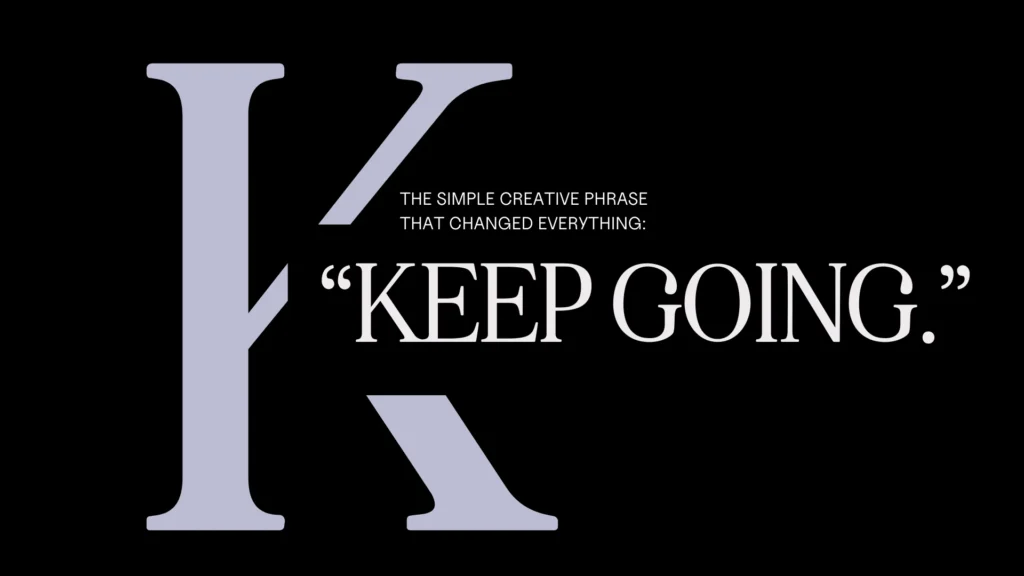
Now, this isn’t necessarily a new phrase. It’s not a revolutionary phrase, and it might not even be a super poetic phrase, but it was told to me by a musician, songwriter, and beautiful human being, who allowed me to open up some shows for him when he was on tour.
The simplicity in it is what makes it so powerful. There’s so much beauty in really poetic ways of saying things when it comes to art techniques.
When you are getting analysis paralysis, you need to have something simple. The thing is, our art doesn’t always have to be so abstract and complicated, or at least our creative process, right? There are elements of it that make us special and that we want to spend all this time on, we want to perfect certain things.
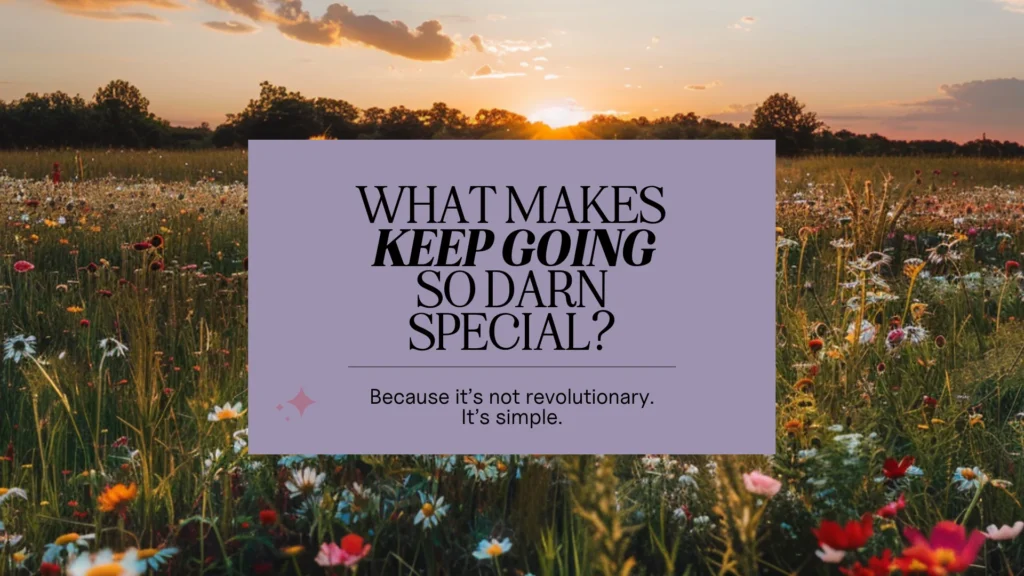
But then there is that fine line of big, huge actors looking back on an amazing performance and being like, “Yeah, that could have been better.” And you’re just like, “What? How could that have been better? You were perfect.”
But this is the thing, we need to hold ourselves to a high standard, but then there are also elements where it just, why are we overcomplicating it? What things in your artistic life can you just put out and not overcomplicate?
There are a few steps on how to use “Keep Going” to achieve your creative dreams. And the first one is having systems and simplicity over having big goals and grandiosity.
Goal setting is amazing when it comes to artist mindset. But, if you’ve ever heard of people talking about the Law of Attraction there are a lot of haters, saying, “Well, just saying that something’s going to happen is not going to make it happen.”
And that’s absolutely right. And I’m a huge Law of Attraction nerd, especially when it comes to artist inspiration. If you’re asking yourself “how can I become a better artist?” it’s definitely not going to lie in sitting around and wishing!
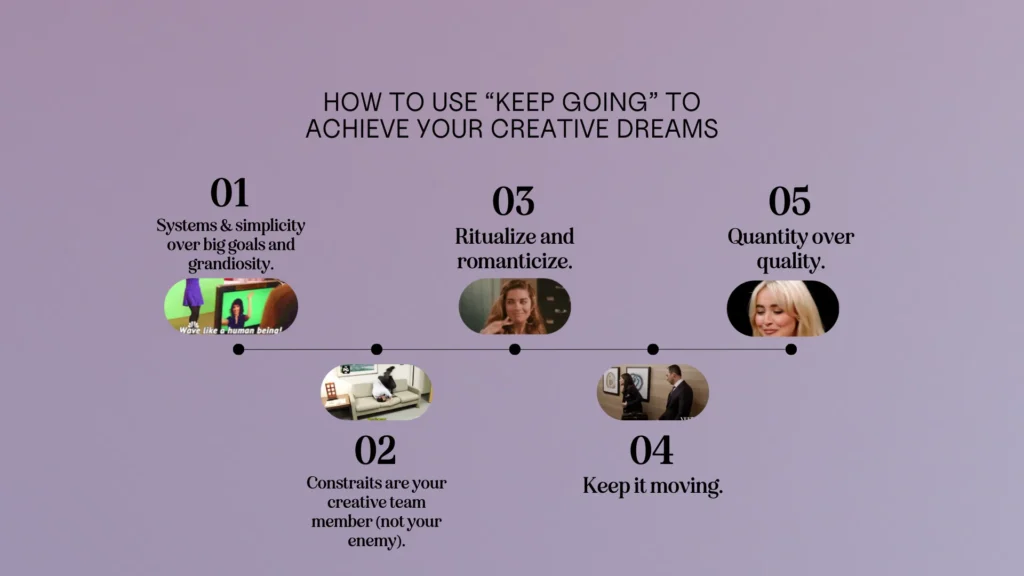
In order to be able to actually follow these big creative dreams, you have to break it down into more incremental steps.
So you’d have a big, grandiose (I don’t even know if I’m saying that, but I’m just going to go with it) goal.
Static and I have a goal of being able to purchase a house. Almost creating this campus lodge type thing where we have our house, the recording studio, a guest house, a pool, a theater, a speakeasy, a bunch of amazing things on this land. This has been a goal for probably at least three or four years,
and I don’t think about this goal every single day. Because there are so many mini goals to actually get here.

Goals really are this fluid thing.
I think a lot of people think goals are like this bubble where you pop it and it’s done, but a goal is like when you spill glitter on the ground and you’re walking in it, but then the glitter’s sticking to you and it’s going to the next one.
I don’t know if it’s a good visual, you keep pouring glitter and then once you walk towards that spot. Yay, there’s a lot of glitter, but then there’s more stuff, it’s just like a constant drag of beautifulness throughout your life that never really stops.
If you love this, check out How to Become an Artist: Get Unstuck When You’re Getting Started  |
I feel like that visual works in my head. Let me know if it works for you, or if it’s hella weird.
It’s not this bubble, little steps that just make life so much more chef’s kiss and delightful.
I have other goals that are slightly smaller and then I have goals that are slightly smaller in that and some goals that are slightly smaller in that. Let’s use my example: artist oasis compound.
Also, I want to tour my music and have my music be loved and recognized and that, see, like, this is just one goal.
Like, you can have so many. That’s the wonderful part of living.
(When I was little I asked an adult, I was like, “Can you have more than one job?” And they were like, “No.” I was really sad, but you can, you can have more than one job. You can have more than one goal. You can have more than one persona, anything.)
Big artist compound. Within that, I’m saying, okay, I need to be able to afford a house.
So I have a goal within that, that is, okay, I want to save up X amount of money for a down payment for a house. Then I also have some goals within that too, like, “Oh, maybe I want to make more money in my freelancing work.”
Right now, one of my goals is, I want to be able to make money from YouTube and vlogging, which is why I’m here. And I’m so grateful that you’re here. And if you are here, feel free to hit subscribe and help me spread that glitter.
So I have all of these little goals that are miniature, and you can see that this big goal that I’m talking about has so many elements. I’m like, I want this, and I want this, and I want a loan, I want to build a pool, and I want to build a studio, and I want like, that’s, it’s so big, and so these smaller ones are a little bit more clear because I’m closer to them.
I want to be able to save X amount of money to save up for this house, however much that is. That’s a very clear goal. Okay. Save up this amount of money by this date. Very clear. I want to be able to make a full-time income from YouTube and blogging. Okay. However much that would be. I want to be able to make that by this date.
Very clear. Starting simple.
Think about a big goal that you have and if it is this big grandiose (still gonna say it like that, still not sure if that’s how you say it). I bet you, you have at least one of these grandiose goals that is “I have had this goal for years. I feel like I’m not getting anywhere close to what I want to get to it.” Start breaking it down.
What is a way that you can make your productivity work for you? How can you make it really simple? How can you make it so easy for you to get started on whatever you need to get started?
Let’s not get into, “I want to be able to buy a million-dollar house and have a pool and have this in three years.”
What do you even, where do you even start? That’s so complicated. Let’s just start with something mini.
“I want to save up 10,000 by May 1st, 2025.”
Cool. That’s clear. And then you can even break it down more into systems. Simple systems for working and practicing simple systems for achieving those goals.
I make this much. I can save this much a month. It’s gonna take me that long. If I want to make more and save more, what other work can I find? Can I raise my prices? Can I find a better job? Things like that.
Simplify, simplify, simplify. Because it’s actually gonna support those bigger, more complex dreams and actually make it easier for you to see it when you break it down.
It’s this whole idea of people have an idea to create a product. I just bought this hydroponic garden. A business owner didn’t just say, “Hey, we’re going to build a hydroponic garden.”
Yep. Cool. Let’s do it. Going to make a hydroponic garden. Got to start by researching. Then we got to gather a team. Then we got to create a prototype. Then we got to do this. There’s a million steps to that that are actually very simple. If you broke it down, you’d actually be like, wait, that’s so simple.
Like literally make it stupid easy.
Liking this? Check out Vision Board Ideas & Strategies for Creative Motivation  |
I very much suggest a tool like Asana. I’m using Asana right now for my notes on my iPad. You can use it for free. It is such a simple way to just assign yourself tasks every day or you have a task and you have little subtasks.
Ready? Okay. So this is my YouTube. This is my YouTube video. I don’t know if you can see it, but this is the title. And if you scroll down, you can see there’s subtasks. And so you see where I have the YouTube video, but then I also say, okay, script is outlined, slideshows created, videos filmed, script and video edit.
Like I break it down. It’s also more satisfying to be able to click off all those things. And that’s really important in your creative life. You want to see that things are moving. I bet you have a goal and you might just feel “I’ve had this goal for years and I’m nowhere near it.”
If you break it down into these small little systems, you can actually see yourself getting closer to it. It’s amazing.
Here’s the edited version with emojis removed and basic formatting/spelling errors corrected:
If you have genuinely no place to start, there’s an amazing tip from Jack Canfield that really helped me get started. And I highly suggest his book, “The Success Principles.”
And he said, do five things every day that gets you closer to your goal. So if you don’t even know where to start, then just think about what this goal is.
Is it to have an Etsy shop full time? To become a dance influencer? Then what are five things you can do today?
I can pick a name for my Instagram account, I can get a tripod so I can set it up right in my dance space, create a little box of cute dance clothes that I can wear so it’s easy for me to put it on and record a video, I can choreograph my first dance, and I can schedule my first reel for next week on Monday.
That’s crazy! That’s so much! And think about doing that every single day, weekdays, 25 things a week that you can do towards your creative career.
Simple, simple stuff. The stuff I’m saying right now, not revolutionary. But it is the key to the “keep going” principle, which I just want you to do. I want you to do.
There is a little way to also look at goals, which are called SMART goals. And so this is specific, measurable, achievable, relevant, and time-bound. This is something that again helps you really narrow it down. If you feel like you have this big goal and you’re just like, I’m not reaching it, ask yourself, is it specific? I want to have a house? Where do you want the house?
How big do you want the house? What do you want it to look like? Where do you want it? How much land do you want? What do you want the rooms to be like? Do you want it to be a fixer-upper? It’s a million questions.
Measurable: When do you want this house by? How much do you want to be able to pay for this house? How much do you want from a loan to get this house?
Achievable: I want to have $10,000 by tomorrow is probably not achievable unless you have 9,999 in your bank account right now.
Relevant: Is it relevant to your aspirations as a whole? Does it make sense? I want to have a dog that can walk on its hind legs and make me dinner is probably not relevant or possible. I would say that’s not relevant for sure.
Time-bound: By what time? This is a huge one, because I know a lot of people will say, I want a house.
I want a Victorian house in the middle of Texas. By when? Because if you’re putting that out into the universe, the universe is going to be like, “Okay, see you in 20 years.”
When do you want it? By next year, in two years, be specific.
The next big point of this is that constraints are actually your creative team member, not your enemy.
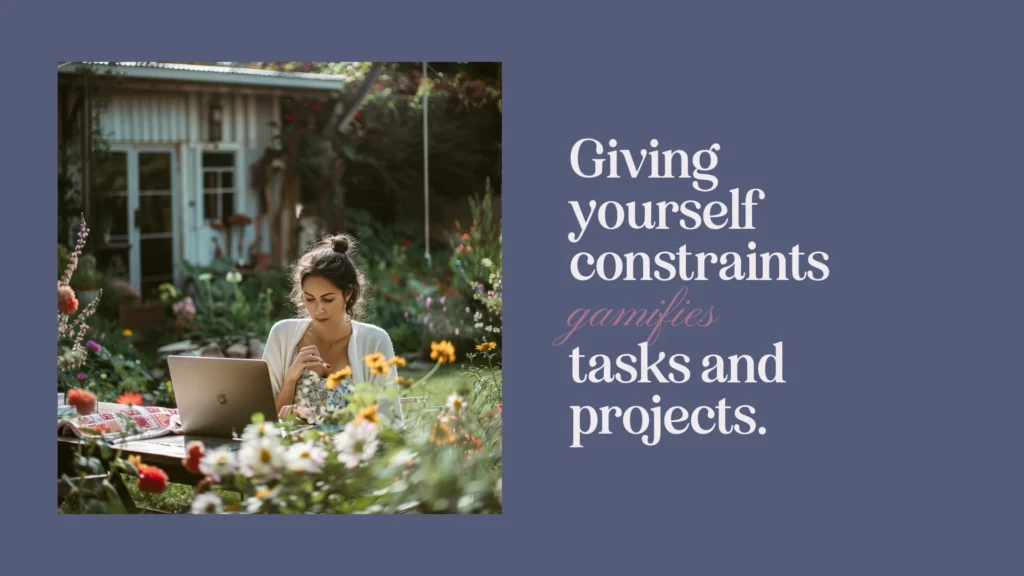
A lot of people are afraid of constraints. You’re a creative and you got a full-time job and you’re just like “I have no time for my art” which I have dealt with and that is tiring and exhausting and the worst feeling is when you’ve spent all this time being super intentional and present in this full-time job and then you’re home and you’re exhausted.
There is a balance to this. But if you give yourself constraints, it’s actually gonna help you be more productive.
I’m saying this healthy constraint. So I’m not saying to work 14 hours and be like, okay I’m gonna not sleep and then work on my creative career.
Use it as your advantage. If you’ve ever read the “Four Hour Work Week,” there was a little story that Tim Ferriss had in there. He was really late on a paper. He had told his professor the night before, “Hey, I have been trying to work on this paper. I had to interview someone, but he dropped out. So I’m not gonna be able to turn it in by tomorrow.” And the professor was like, “You’ll figure it out.” By the next class he had a paper, and I think he got a really good grade on it. He also gives this example of people who work full time, and let’s say they have to leave early to pick up their kid from school, they usually work from 9 to 5, they’re working from 9 to 2, somehow magically they get all of their work done at 2. People fill up the time that they’re given. We all shuffle papers from nine to five. Another example in his book, if the doctor said you physically cannot do any more work than two hours a day or one hour a day. What would be different about your life?
What would be different about the work that you’re doing both in your dream creative field and not? What if you’re working a full-time job remotely, you’re filling up eight hours, but you really only do three hours of work? That’s crazy. What if you tell yourself on Saturdays, I have the whole Saturday to be creative, and then you’re just like, I did nothing.
Probably because you said you had the whole Saturday, and you were kind of like, I have too much time. For me, if I have two hours of songwriting a week, which is what I assign myself, I get that done. I focus the heck out of that time.
Think about the constraints you have and use them as something positive instead of something negative.
Constraints are a tool. It’s almost gamifying something like okay I got two hours to do this. What can I do within these two hours to really prioritize, really get this done?
I’ll set timers too when I’m cleaning the house and I’m overwhelmed. One hour, two New Girl episodes and wherever I’m at with that, I’m done.
Same thing with things like Pomodoro Timer, or if you do body doubling subscriptions online, like Focus or Cave Day or anything, those are constraints and they’re fantastic for reminding you how much you can actually do to get yourself to keep going.
This goes back to this whole idea that productivity as a creative does not have to be this harsh, scary thing. Productivity is energy. It’s spiritual, it can be joyful, and beautiful.
Even the simplest things on Asana, one of the reasons why I love it so much is that every once in a while when you check off a task, this unicorn flies across the screen.
They have all these little delighters, and that is so special, things like that, like being able to color coordinate it’s purple and I have a little flower emoji.
Gamifying is fun. I follow this YouTuber, Daya, and when I started becoming a freelancer, I watched all of her videos and she had this one video about gamifying getting your first client. It was this whole notion board of you give yourself one point every time you send a proposal or send a cold email. You don’t focus on outcomes, but whenever you do it, you earn this amount of points and buy yourself something.
It’s just cute. And we love cute productivity here.
There’s this even deeper level of gamification is that it can add higher stakes to your tasks and projects. It reminds you that you don’t have all day. If you said that you had all day to do something, I guarantee you’re, like, waiting until the end of the day, at least for me, for stuff I don’t want to do.
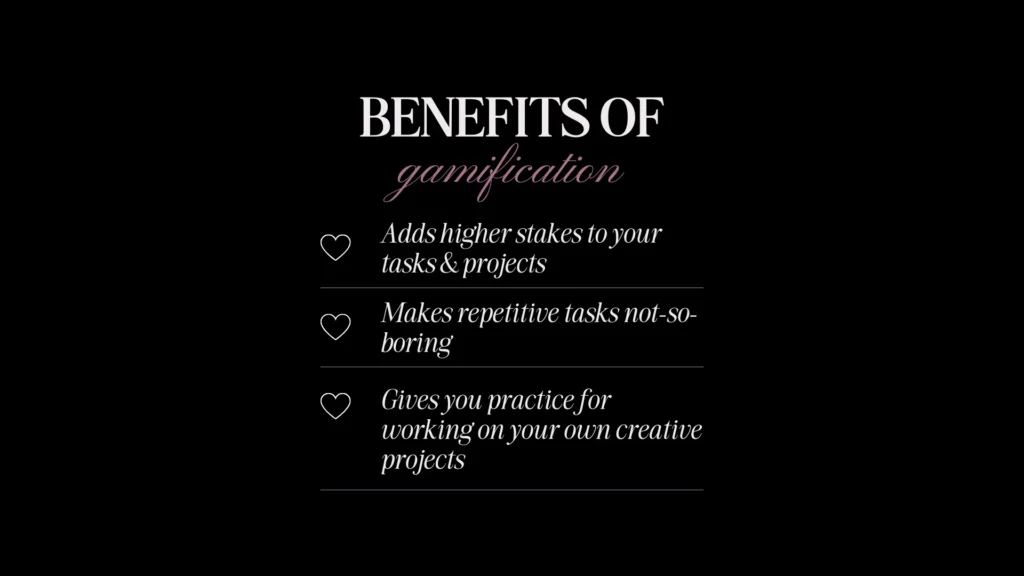
When you do gamify things, it’s “Oh, crap, let me really take advantage of this and squeeze as much of this out of it as I can.”
It also makes repetitive tasks not so boring. Making certain work more joyful. I have a lot of repetitive tasks that I do with clients. I do SEO marketing with clients, and there’s some repetitive tasks that I really don’t need my brain for at all. I’ll turn on New Girl, or I’ll turn on a podcast and do that, and then when I have to actually focus, I’ll turn it off and focus.
But it’s like, why can’t you make things fun? Why do dishes have to be boring? Why can’t you turn on Friends every time you’re washing dishes? Just because you’re an adult? No. Adulting is super fun.
This gives you practice for working on your own creative projects.
Your creative life is not always going to be sunshines and rainbows. I love being on stage, but the amount of time that I’m on stage versus the amount of time that I’m practicing or planning or doing something else that has nothing to do with that but I know I have to do it for the show, it sometimes can be very overwhelming, but if you just use this idea of gamifying things, it helps you keep going for your own creative project, so you can actually see the return on it that you want to.
This next part is, we want to ritualize and romanticize. How can you romanticize your life? How can you make your life more beautiful? There are so many things that I do every single day that just make my life so much better.
I always make my bed every single day. I do this acupressure mat. It’s so painful but relaxing. This red light lamp and I’ll do that before bed. I have tea in the evening. Hot yoga on the weekends.
These are rituals, these are not things that we do because we’re adults and we sign up for the class and we go to it. These are very special times that we can just do what we want with and just enjoy.
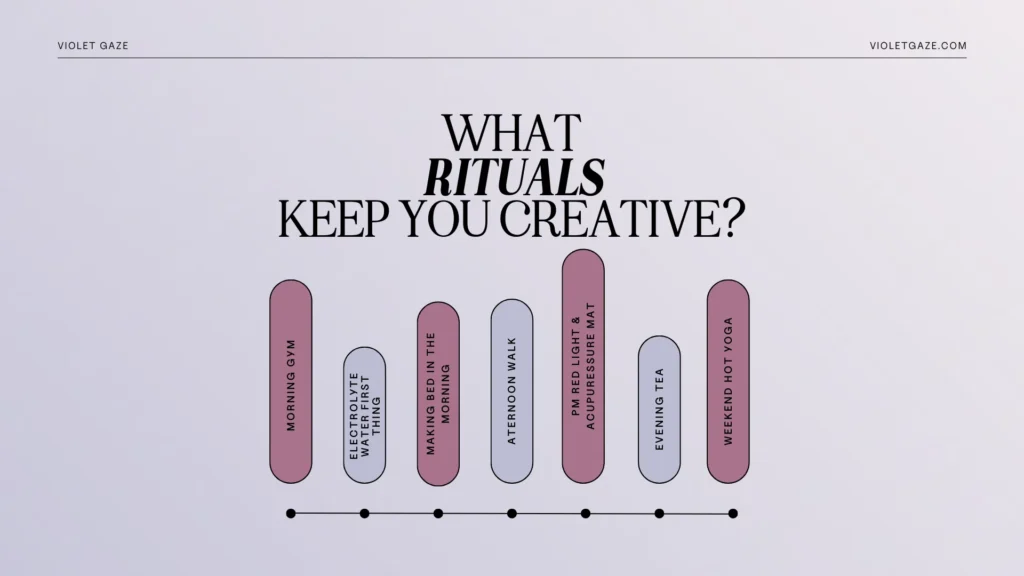
I like to watch cute comedies and do self-care and that’s fun for me, so why not?
I like to have really pretty things around my house that are my favorite color because why not?
These are all rituals. Using things that bring us joy. Buying things that bring us joy. Color coding things. The colors that we love. Using emojis. Putting up pretty wallpaper, designing our spaces colors that make us happy.
Why aren’t we doing more of this? This is what it’s like to be a creative. It is not, again, gotta pop the bubble of this goal, and before I’m there, I have to struggle.
If you were considering painting, performing, singing, acting, if we’re thinking of this as an exercise, the rituals are the book, the warmup and the recovery.
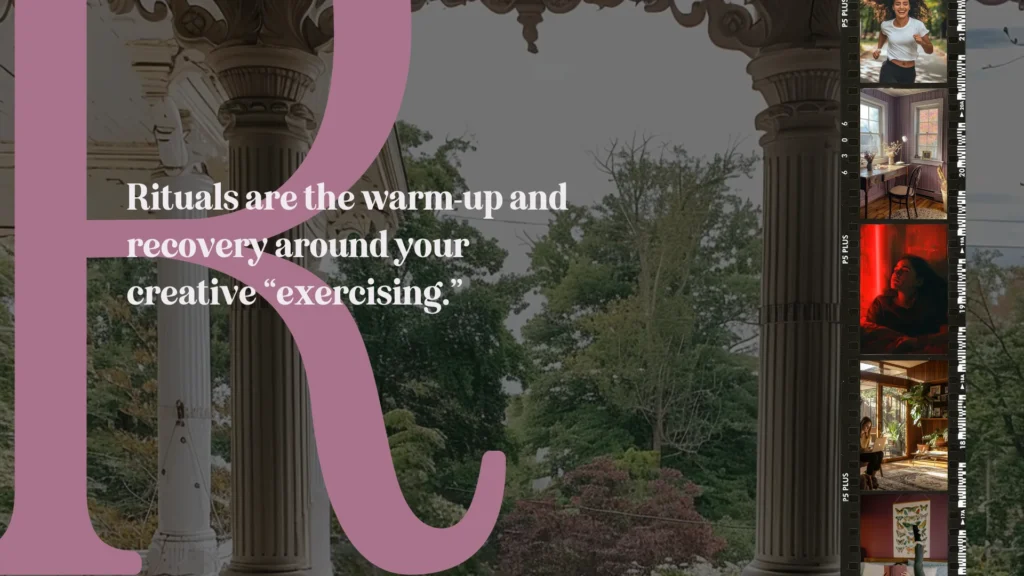
I do some rituals before I go on stage, certain energetic and creative exercises and stretches and recovery wise, I sometimes have to unplug, I can’t talk to a lot of people after shows. When I did theater and people like wait for you at the stage door and I’m like with my headphones, going out the back door, I just want to unplug and just listen to something and not, it was exhausting for me in the best way.
Think of this as, it’s required. You’re going to get hurt if you don’t do this, you’re going to pull a muscle if you don’t do these rituals around your creative exercise.
Keep it moving. Keeping things going and moving can help you physically get out of your head, I think this is why so many people were overthinking in 2020 because we were stuck inside.
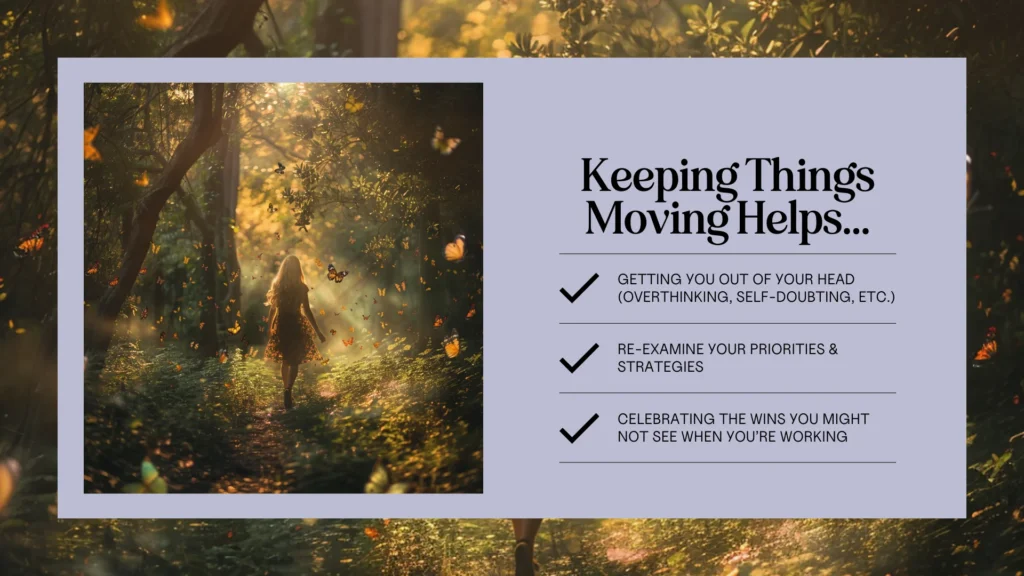
We were physically staying stagnant. It is crazy how much physical stagnancy can actually affect your mind.
In acting school, when we had to memorize scripts, our teacher would say, you cannot memorize them sitting down. You need to memorize them when you’re moving. You need to memorize them when you’re doing dishes, walking on the treadmill.
There’s a whole energy portion of that too, of just physically getting it in your body so that when you’re doing the exercise, now the last thing you’re thinking of is the lines and you’re thinking about being present.
This also helps you reexamine your priorities and your strategies. It’s crazy sometimes when I’m setting a timer, for instance, I say, I want to work for an hour and the timer goes off and I’m like, “Oh, I’m like in the middle of this one thing, let me just finish it.” And then that turns into another hour and then I’m like, oh, but then I could just do this and I guarantee you my work is so not good when I do that.
You’d be so surprised just giving yourself five minutes away from whatever you’re doing and coming back whether this is work or your creative project. How much of a different perspective in art you’re gonna have with it and you’re gonna be like, “Oh, let me do this.” Actually, oh, I’ve been stuck here.
Just getting out will help you just reconfigure a little bit.
This also helps you celebrate those wins that you might not see when you’re working. When your head’s down in something for hours on end, it is so easy to just be like, I need to finish this, I need to finish this.
But if you get up and get moving and change your environment. You can look back wow, I worked for three hours or whoa, I got all these subtasks done.
And look how much closer I am to my goal.
Physically exercise. Get yourself moving throughout the day, whenever it comes to your goals. Literally, this is about keep going. So keep going. Physically moving.
The last little section of how to keep going to achieve your creative dreams is to focus on quantity over quality, and now this is probably, I need some tea, hold on, I need tea. Now the quantity over quality debate can be very hard to pin down sometimes.
We want our work to be good, we have integrity in our art, or a cozy girl job that we have right now, a job that you’re having that’s not draining too much energy from you, or a dream cozy girl job, or whatever job you have right now that you’re looking to transition.
We’re focusing on quantity over quality because when you are just getting started in your career, when you’re just getting started pursuing these creative goals, we cannot be perfectionists. This is where we can get that analysis paralysis that we talked about at the beginning when we’re thinking of quality over quantity. Oh my God, I’ve never posted on Instagram before, but I can’t post because this isn’t perfect. We have to re-evaluate every single action that we feel like we’re hesitant over and just we’ll ask ourselves how much does it really matter?
Who is really going to notice? A little tip that I always have. This goes for very specific things is that if it’s C+ or better, release it, post it. If we are perfectionist about it, nothing’s ever going to happen. And that’s a lot worse. Also think about the permanency and how many people are really looking at this.
If you looked back at my first YouTube video on here, it was not good. It was not good. But I knew that if I don’t post this, I’m never gonna have a YouTube channel ever. It was very painful and very scary, but I literally had zero followers, no one was even going to care. No one was going to see it. I did not tell any of my friends or anybody about it.
And it worked great. Even now, there are things about my YouTube channel I could do better, but I’m still in this phase of quantity. Quantity, because I love building this community. And I want to keep it going for a long time, and so I know that I need to focus on quantity over quality.
Something that I really like to say is that quantity keeps you going, quality gets you good. Think about where you are in your journey right now. If you are at the very early stages of it, then focus on quantity because you got to keep going. Once you’ve been doing something for a few years, you know you’re going to keep going at this, you want to get good now, we’re going to focus on quality.
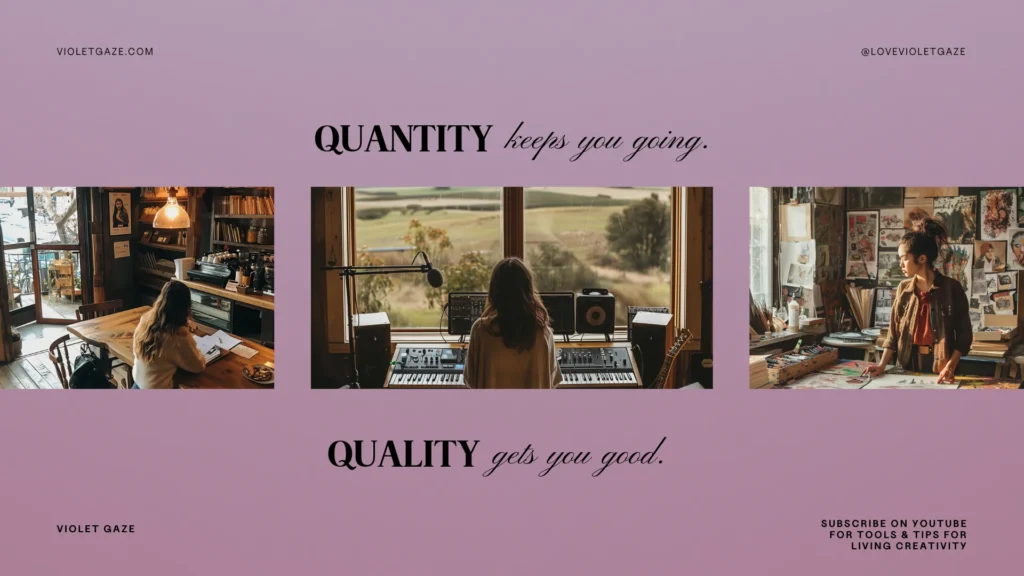
Content creators will do this where they’ll commit to posting consistently once a week or once every two weeks for a year. And then they’ll be like, okay, I know I’m committed to it. Now I’m going to post a little less frequently, but I’ve hired a team and I’m really going to be putting a lot more time into each video.
Some people do that. Other people don’t, it’s fine either way, but that’s just an example.
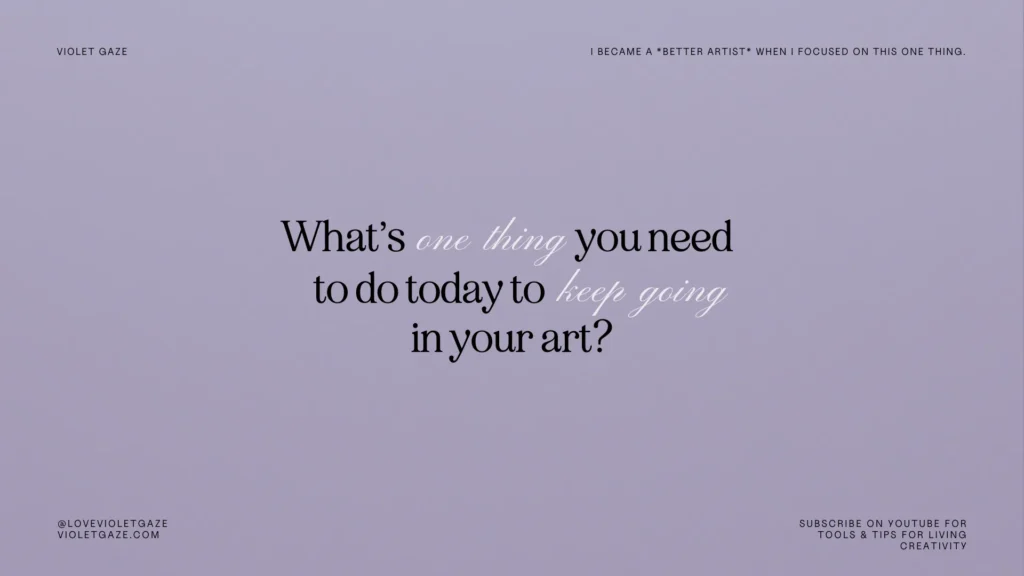
My question for you is, what is one thing you need to do today to keep going in your art? Based on all of the things that we’ve talked about, is it doing five things every day that gets you closer?
Is it keeping things super simple in your goals? Is it making systems a little more enjoyable? Is it creating rituals and being more intentional about your space or your life or the things that you do or the people you see?
Paragraph
Paragraph
Paragraph
This post may contain affiliate links, which means we'll receive a commission if you purchase through our link, at no extra cost to you.
Paragraph
Paragraph
Paragraph
Paragraph
Paragraph
Paragraph
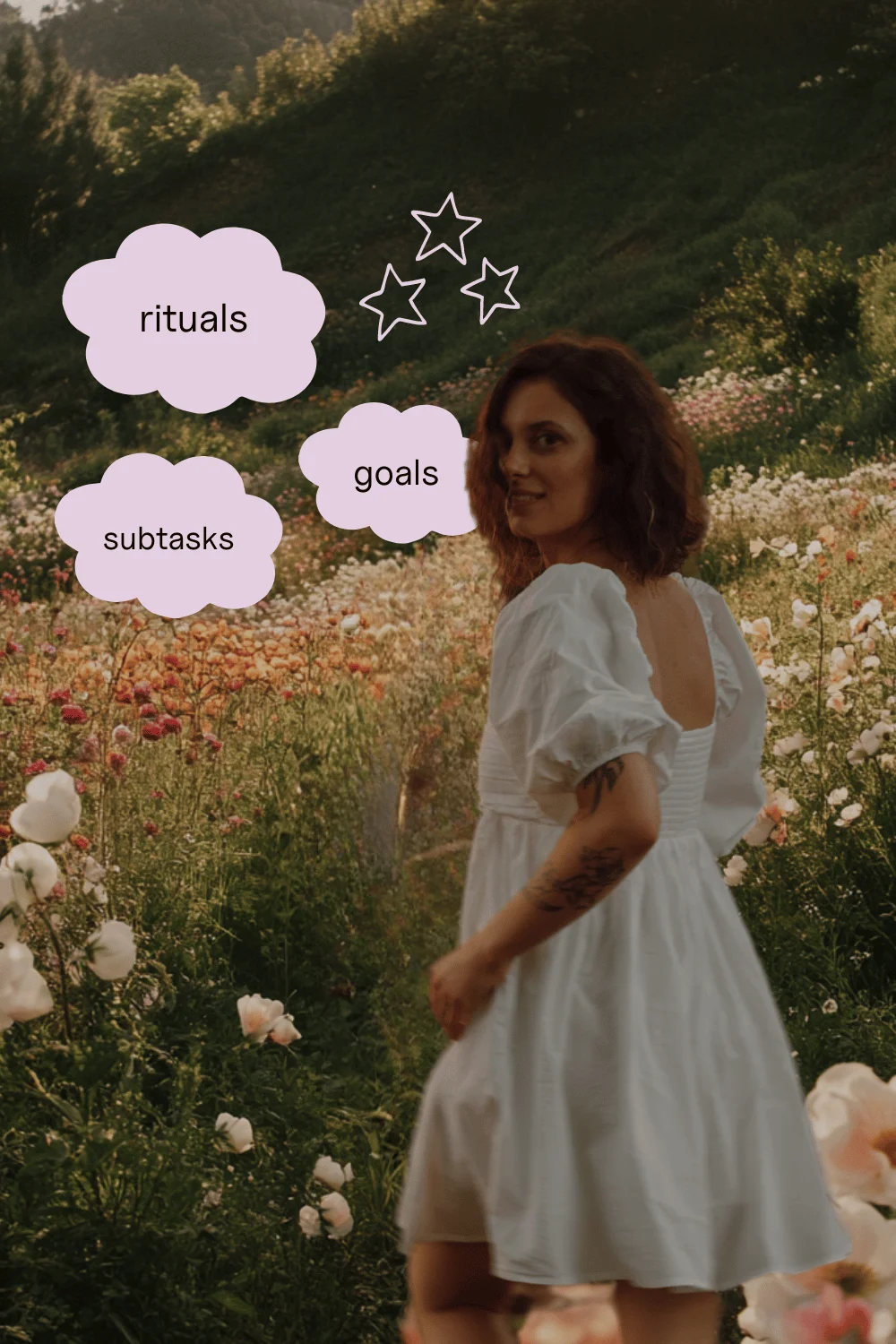

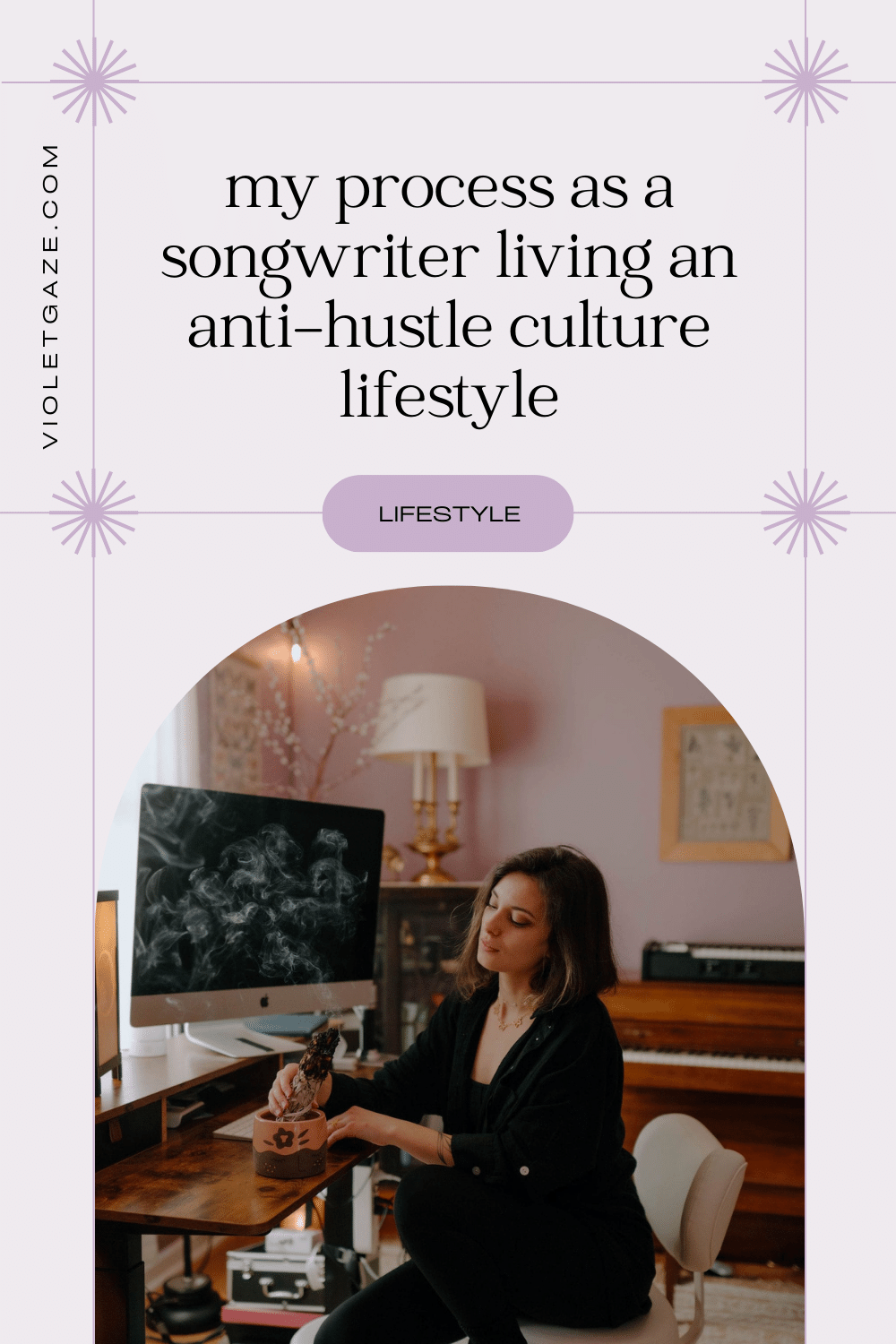
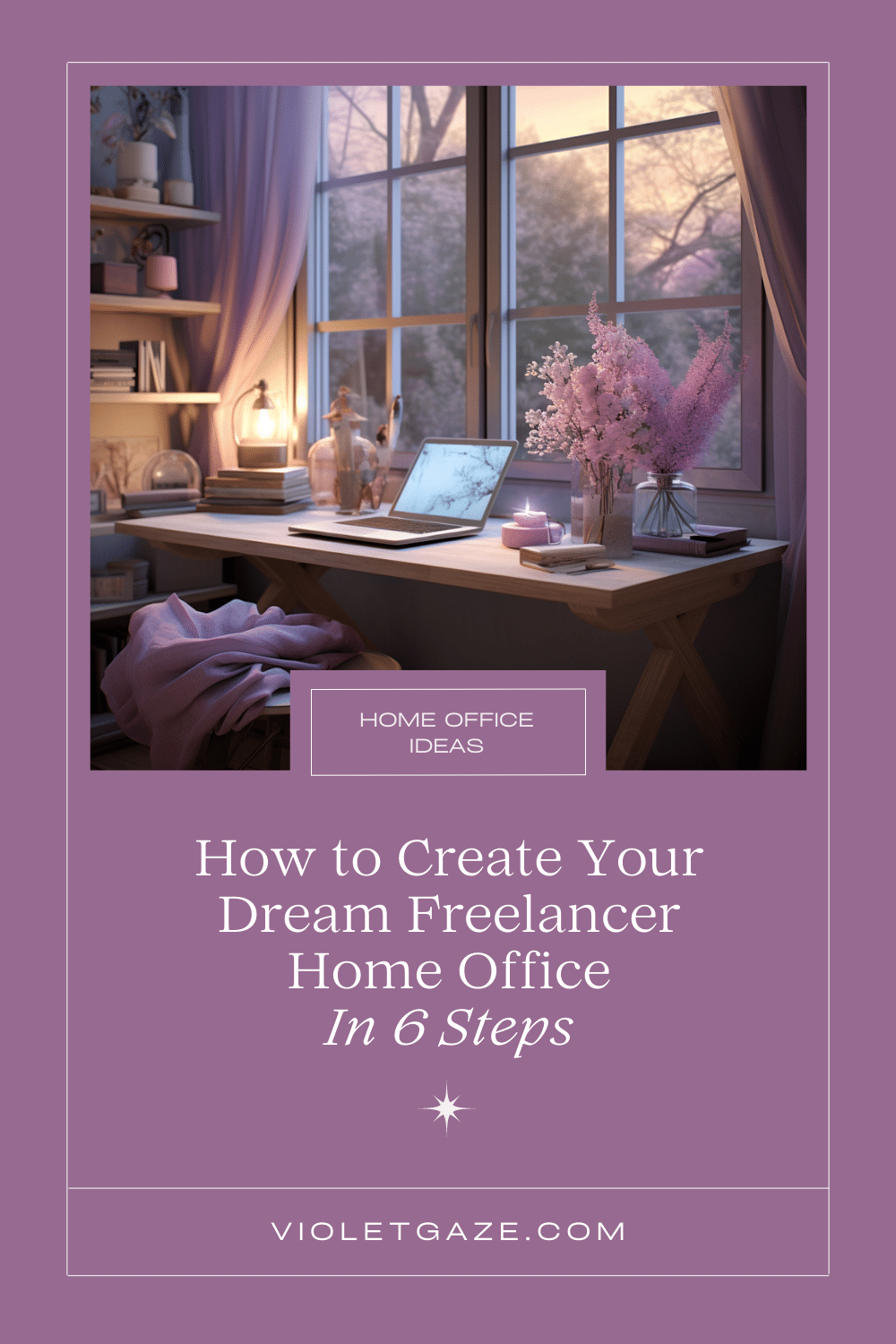
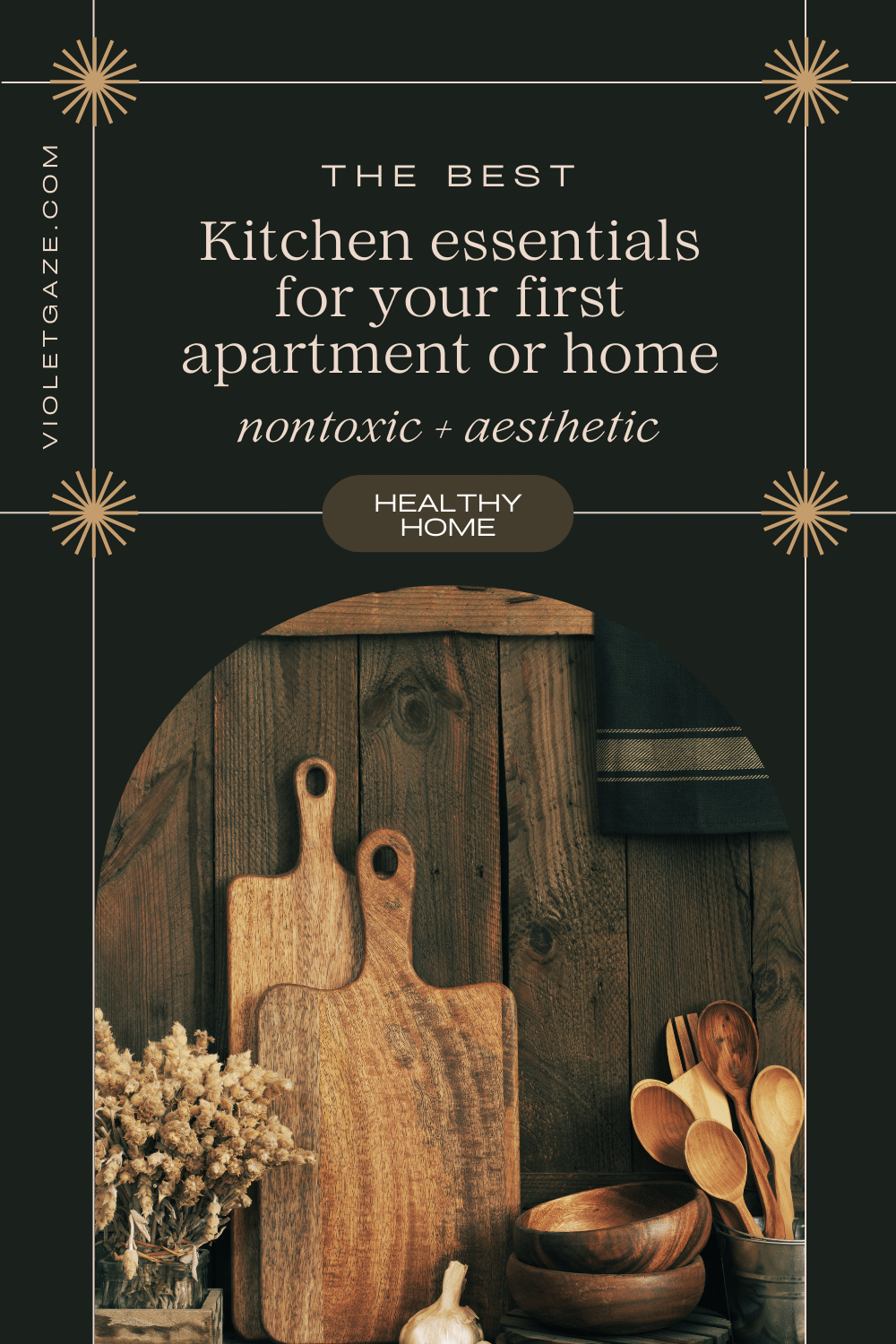
How Can I Become a Better Artist?
VIEW COMMENTS